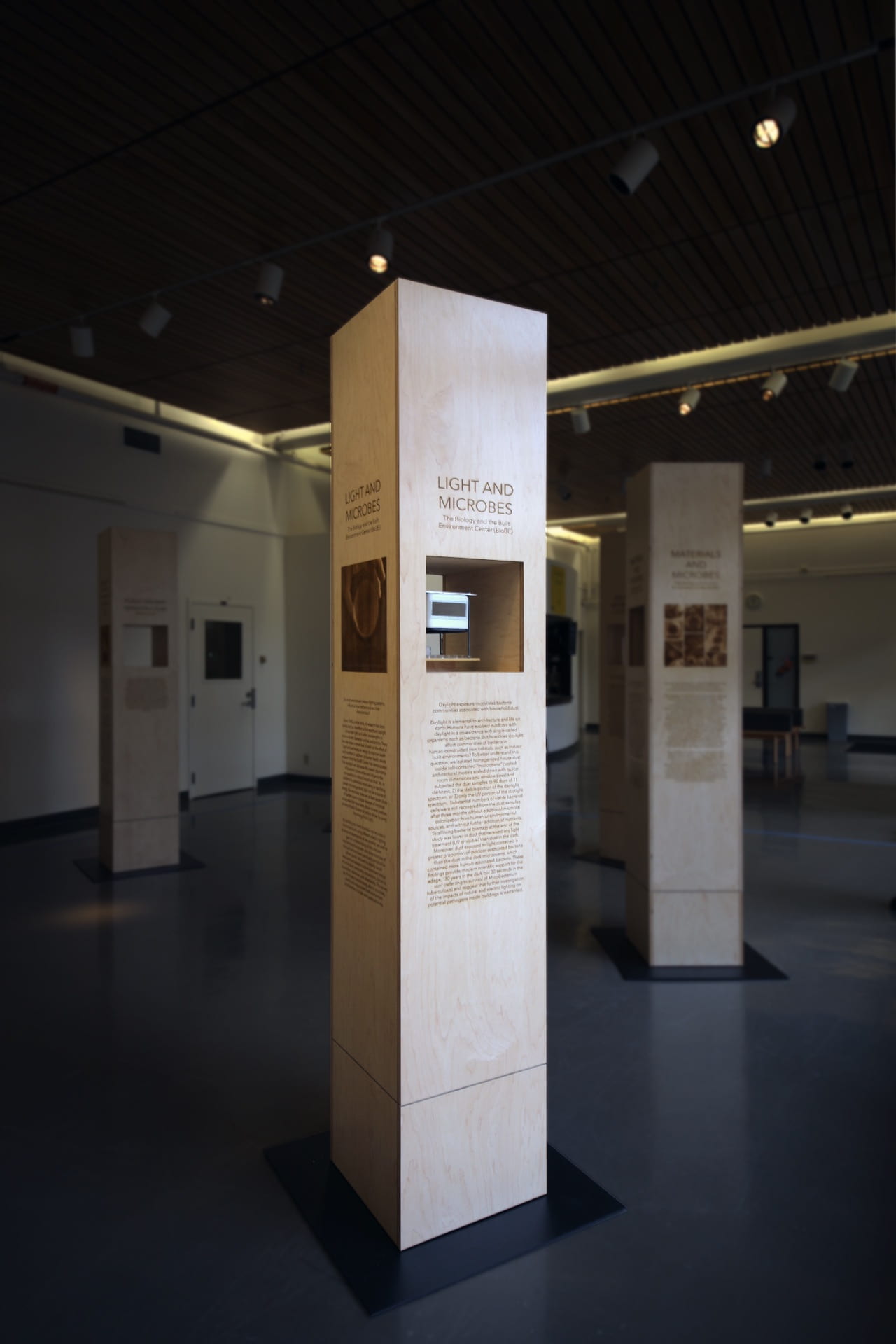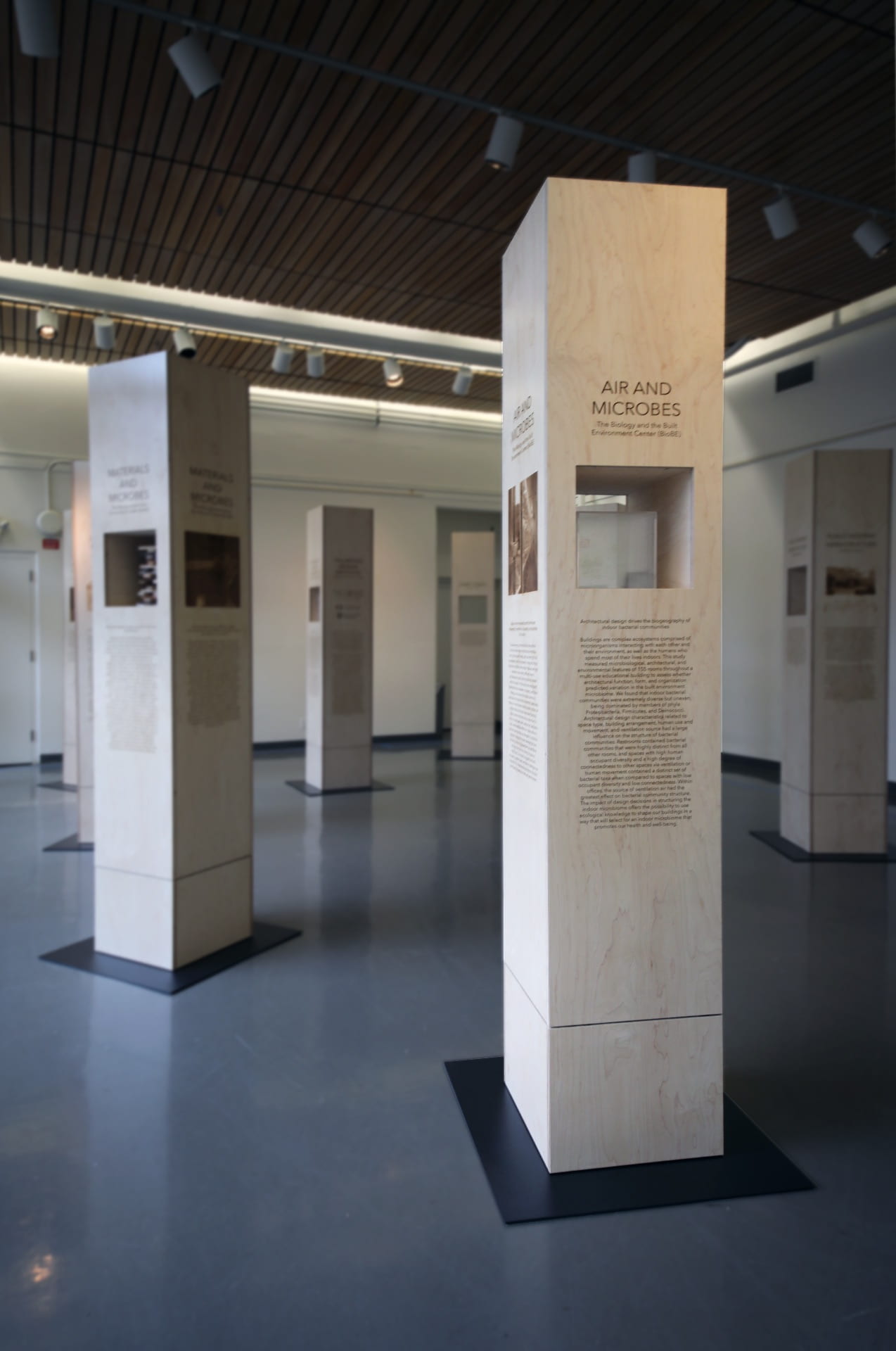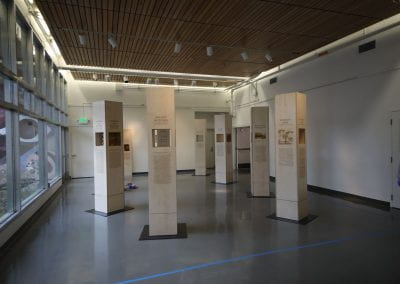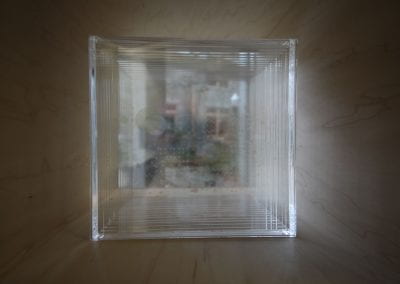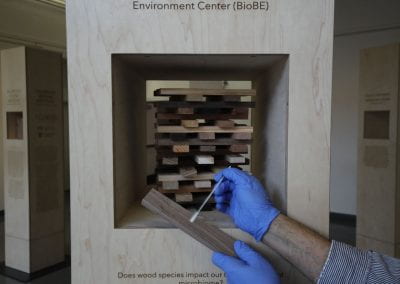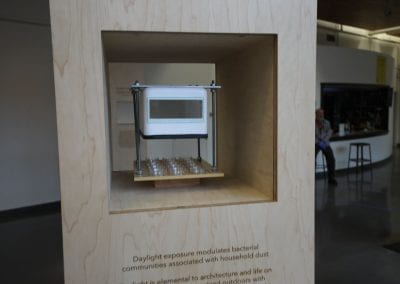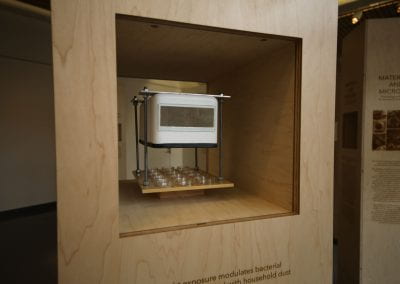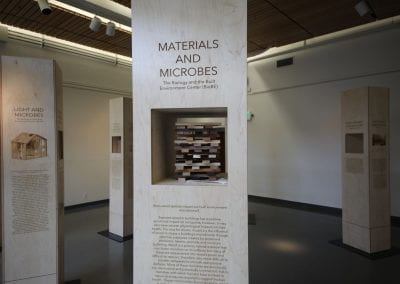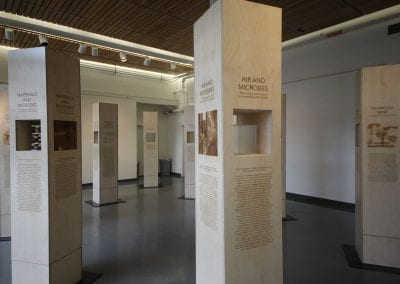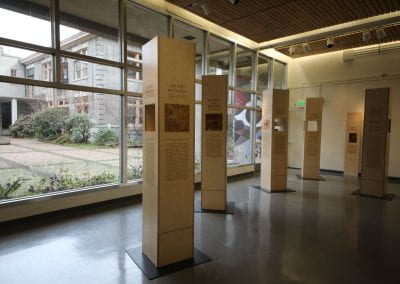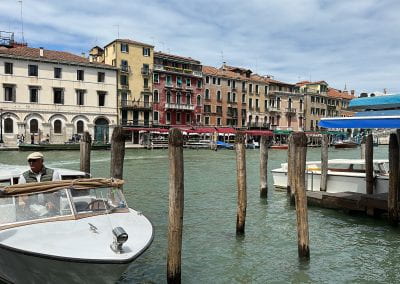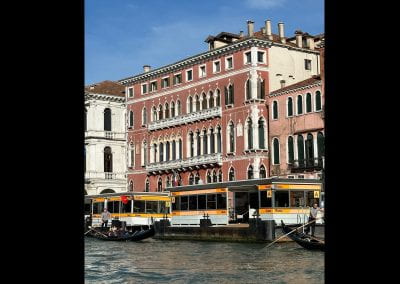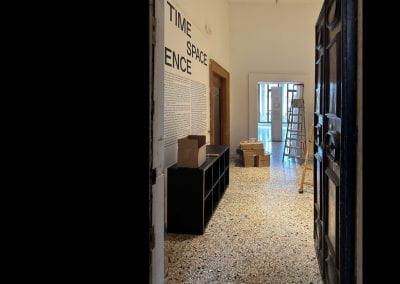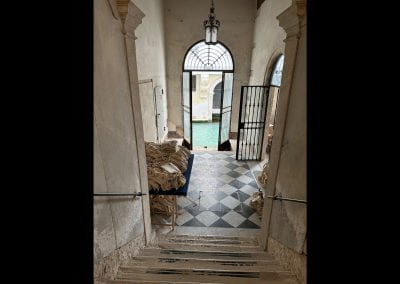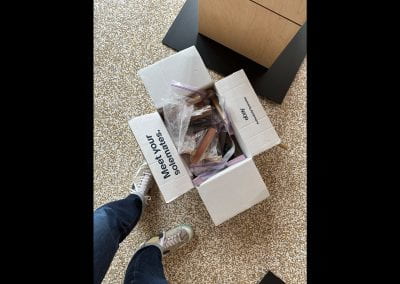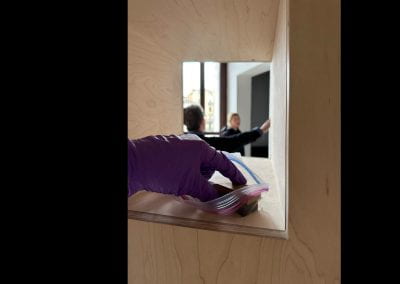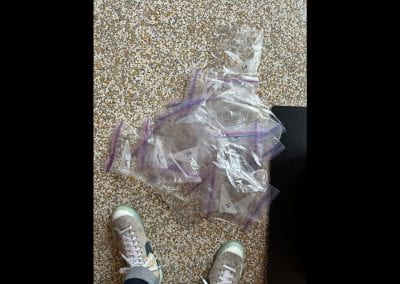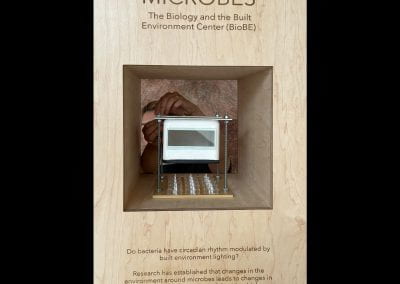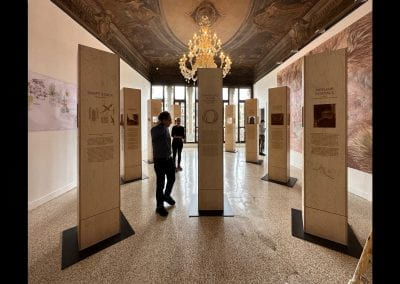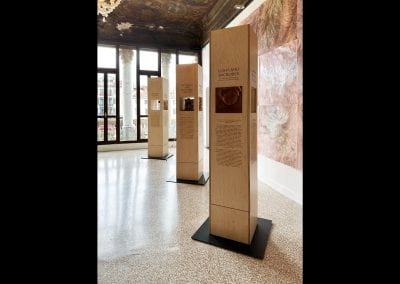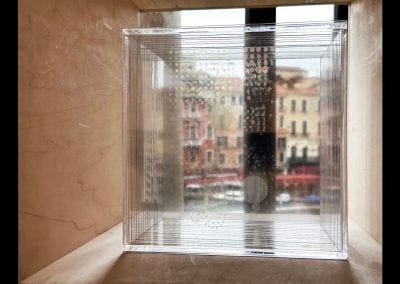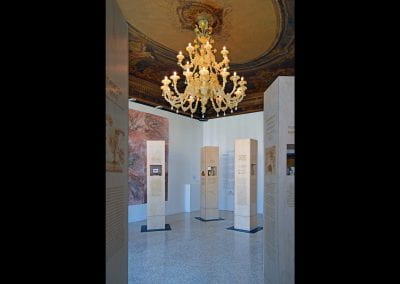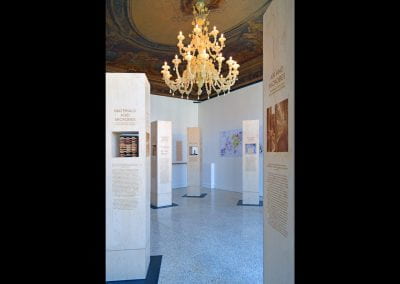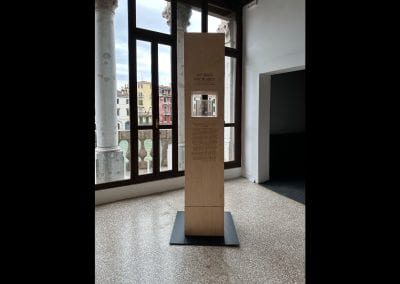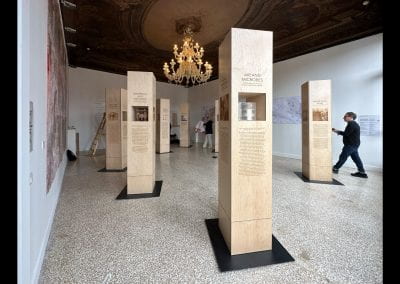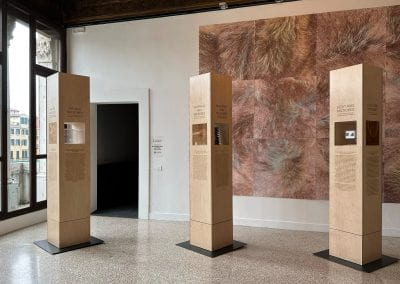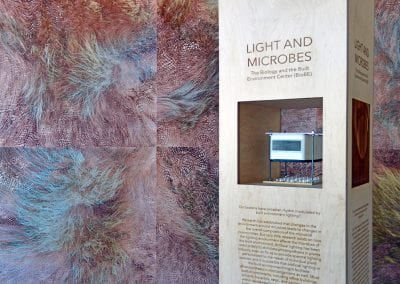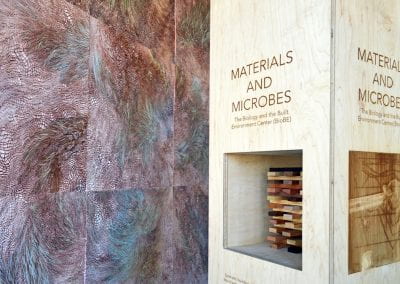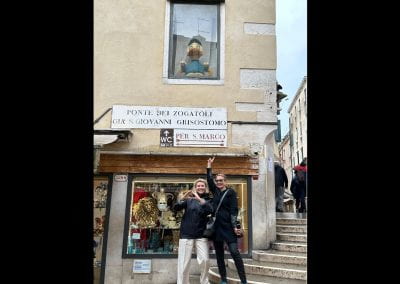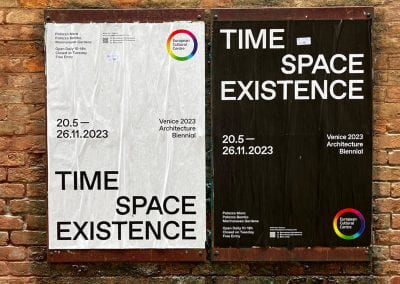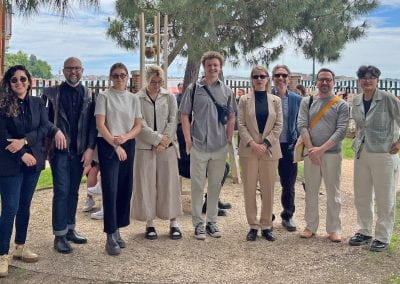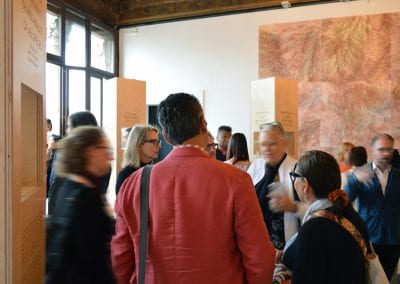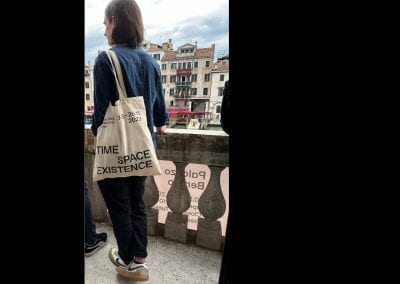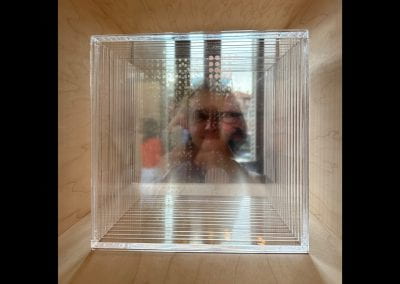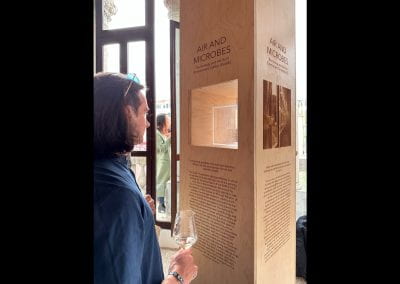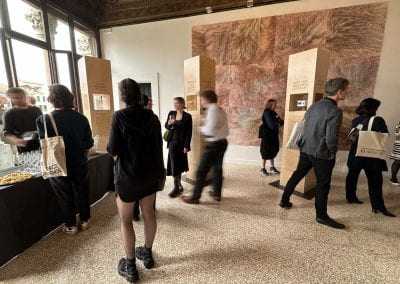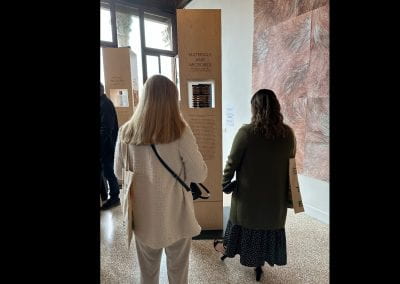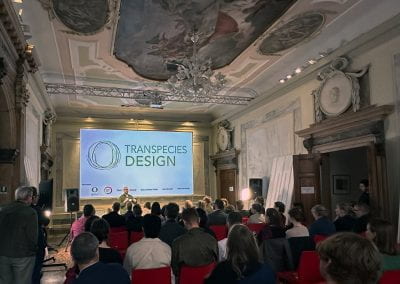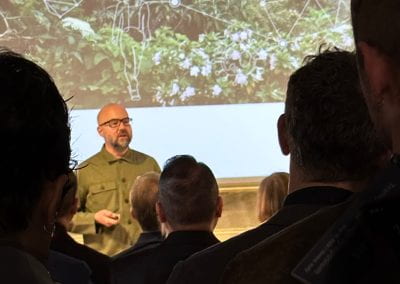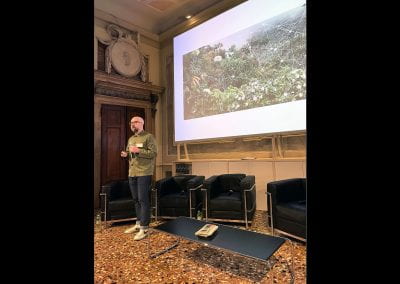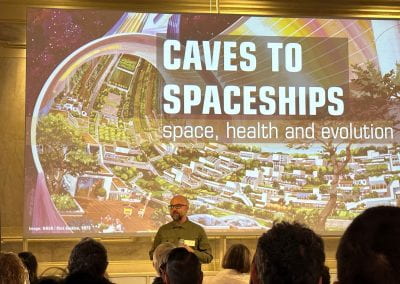2023 Venice Biennale: FUTURE CITIES; Livable FUTURES: Transpecies Design
The 2023 Future Cities; Livable Futures: Transpecies Design Symposium kicked off the Venice Biennale Exhibition on May 19, 2023 at the European Cultural Centre, Palazzo Michiel as part of the Time, Space, Existence exhibition curated by the European Cultural Centre.
The symposium was directed by Dean, College of Design and Senior Fellow, Design Futures Council, Adrian Parr and Head, Department of Architecture and Interim Director, School of Architecture and Environment, Michael Zaretsky. IHBE Interim Director Mark Fretz was invited to deliver a keynote presentation, “Microbial Tectonics.”
Read the Dezeen article on the University of Oregon’s Transpecies Design contribution to the Time, Space, Existence show.
The IHBE contribution focused on the work of BioBE around the realms of Air, Material and Light + Microbes and included an ethereal spatial model of microbes in Air and Space by Sofia Chavez / Fretz, a model and active experiment on wood species and human + environmental microbes by Isaac Martinotti, supported by Rowan Bullock, and a light microcosm model created by Dale Northcutt / Fretz. Text engraved on the wood columns was prepared by Dr. Gwynne Mhuireach / Fretz. Fretz also delivered a keynote address on “Microbial Tectonics” at the Transpecies Design Symposium.
Learn about our individual columns on Air, Materials, Light + Microbes contributed to the Transpecies Design Exhibition, curated by Dean Adrian Parr, which was part of the Time, Space, Existence Exhibition hosted by the European Cultural Centre at the 2023 Venice Biennale
Exploring the interaction of microbes from diverse wood species and exhibition visitors from around the world with the Palazzo Bembo in Venice, Italy
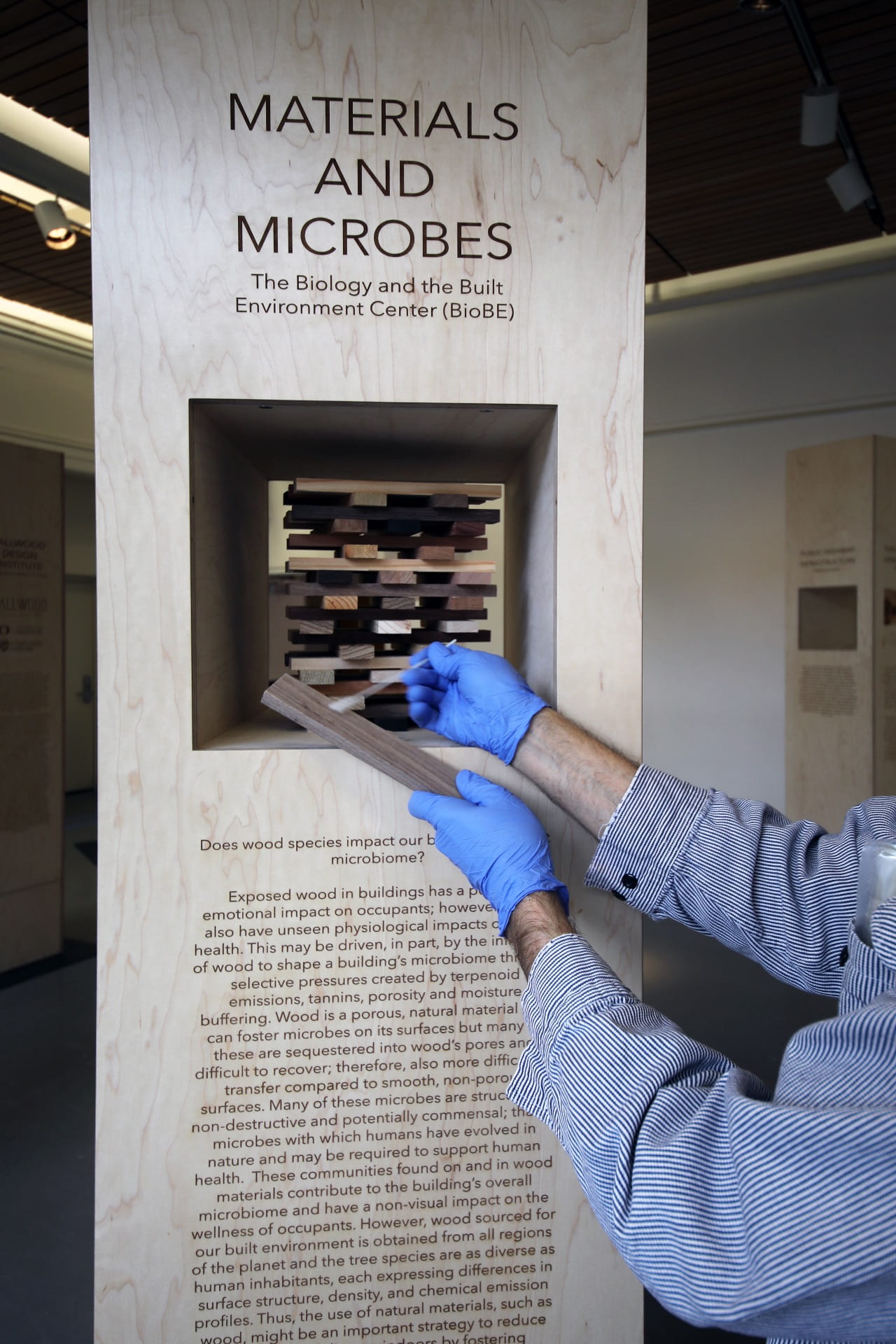
One of our columns is itself an experiment. Filled with diverse wood species from all over the world, layered to allow the movement of air from the exhibition to wash over the wood surfaces and deposit the microbes of visitors and Venice, we will examine the change in microbial community composition over time. To observe this, we used flocked swabs moistened with phosphate buffered saline and carefully swabbed the surfaces of each wood plank before packaging in Eugene, Oregon and sending to Italy. At the conclusion of the exhibition, the wood planks will be carefully wrapped and sent to University of Oregon for follow-up swabbing and processing in the BioBE wet lab, prior to genomic sequencing. Our hypothesis is that the wood density will impact microbial recovery and wood species will impact microbial viability and composition.

